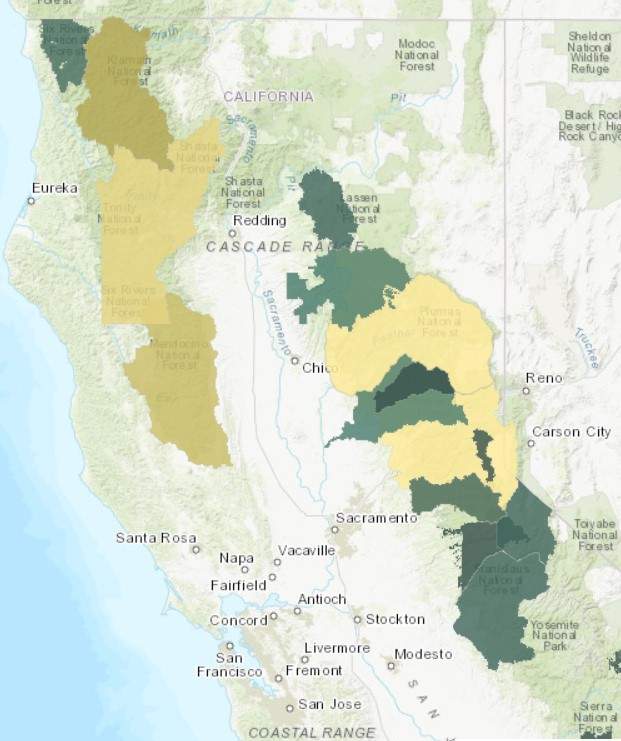
In the Winter of 2020, the Sierra Institute conducted a series of interviews in preparation for our SCALE meeting, in which we aimed to gain perspective from our stakeholders regarding their experience in the 2020 wildfire season.
The impacts discussed in these conversations were highly-varied and nuanced, ranging from practical discussions of hindered collaborative and Forest Service capacity to conduct project work, to stories of personal loss and trauma resulting from smoke events, evacuations, loss of personal property, and damage to vital landscapes.
One thing became clear: the impacts of the 2020 wildfire season were not felt in isolation to other stressors and past traumas. Increasingly intense wildfires, occurring year after year, have accumulated stress and emotional tension among residents and stakeholders of California’s rural mountain communities.

This year, wildfire season has again ravaged California’s landscapes and its people. In particular, the Dixie fire has burned through over 900,000 acres (and counting), including the landscapes and communities that the Sierra Institute calls home. Our staff have been evacuated from the offices, and their homes, for almost two months and have experienced first-hand the type of devastation that these catastrophic wildfires can bring. In one sense, the immediate threat of the Dixie fire, the experience of being evacuated, and for some, loss of property, has helped to create a more profound understanding of the topics and experiences that were discussed in our previous interviews. In another sense, though, as members of the Indian Valley community and residents of California, we have never been immune to the stressors and emotions associated with wildfire.
Repeated evacuations and fear from previous close-encounters with fire have left many residents of the Feather River watershed anxious and uncertain. Following fire, the initial stages of recovery are crucial for ensuring stability in local economies and access to clean water and air. Many regions of California have adapted to these vulnerabilities by using the collective voice of a collaborative group to align the priorities of diverse stakeholders through forest planning and project development.

It’s time to alleviate uncertainty and anxiety with action to rebuild our community to benefit the environment and strengthen our economy. The Sierra Institute is focused on accomplishing this by building a community sawmill, establishing a biofuel plant, and supporting teams to clear underbrush.

